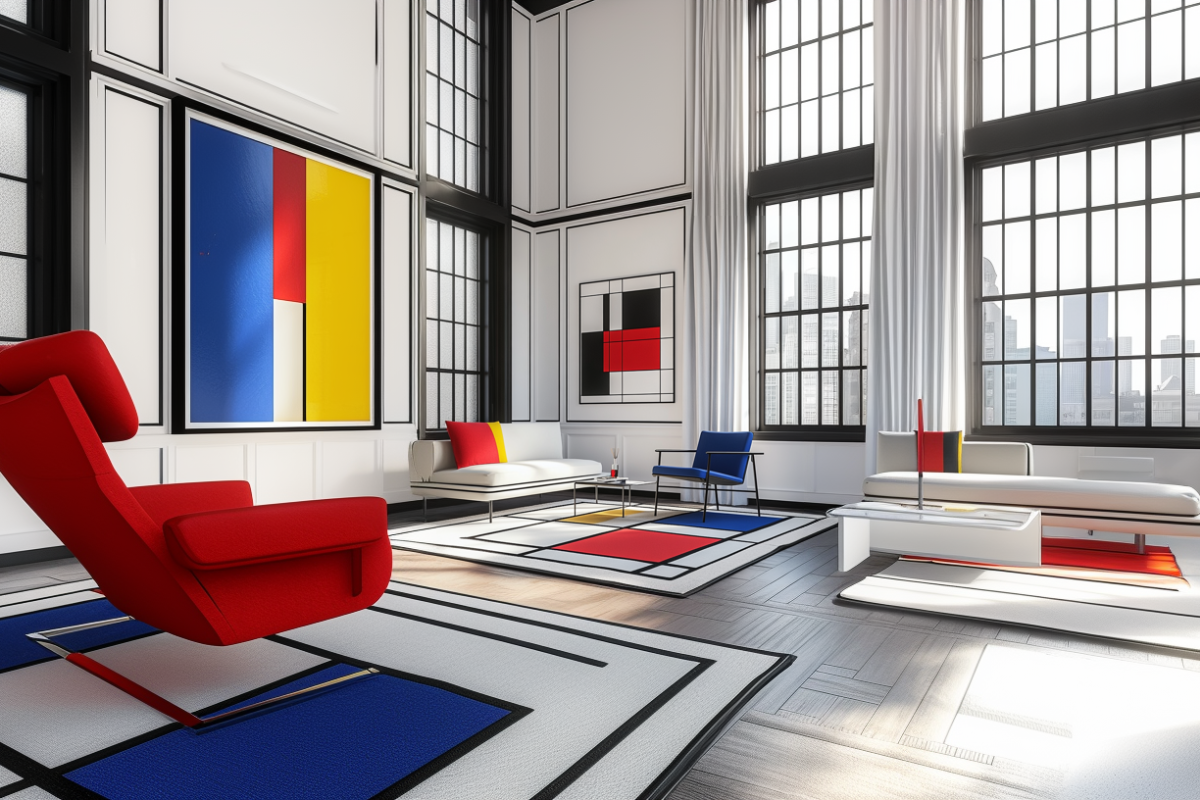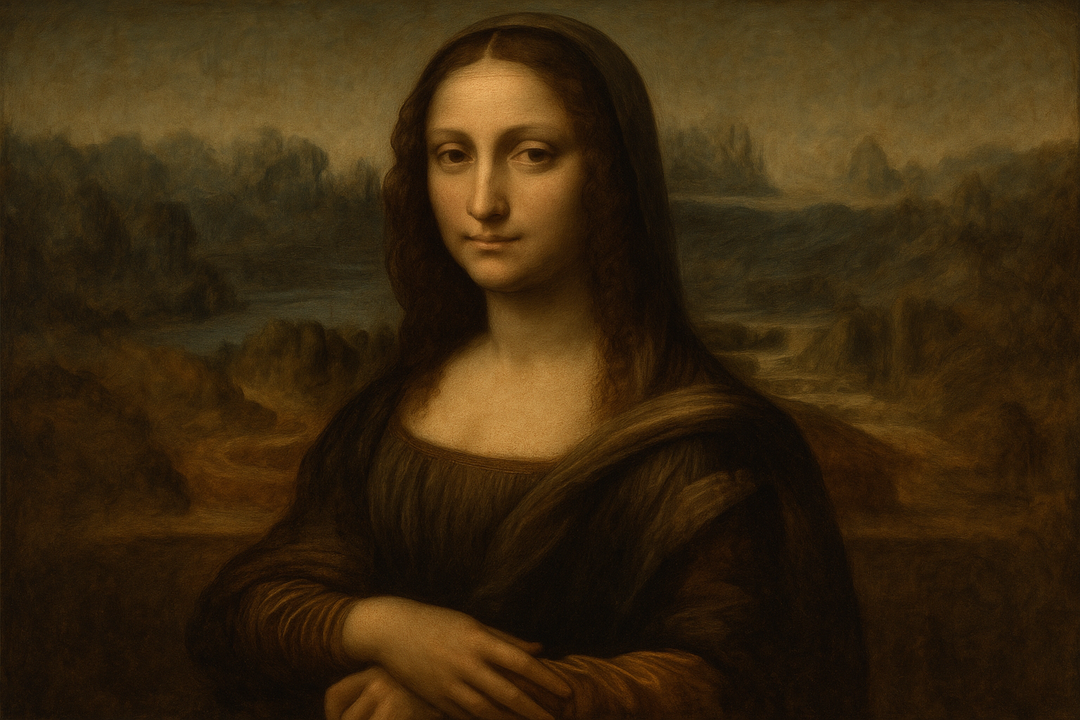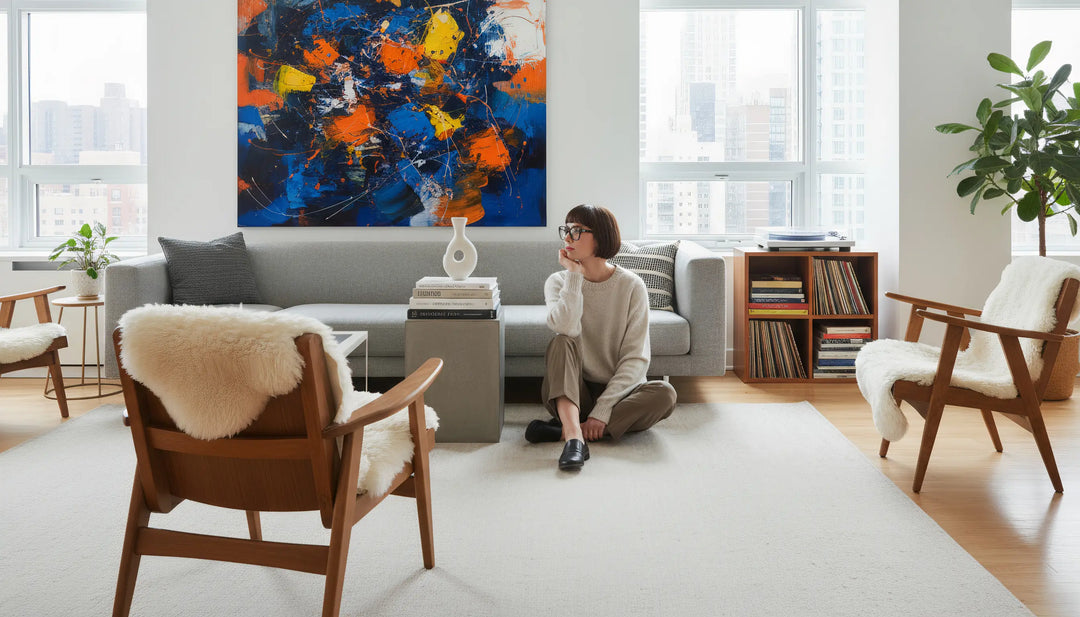Key Takeaways
- De Stijl (1917-1931) revolutionized art through geometric abstraction and primary colors
- Founded by Theo van Doesburg and featuring Piet Mondrian as its most famous artist
- Influenced modern architecture, design, and the Bauhaus movement
- Legacy continues in contemporary minimalism and graphic design
De Stijl, Dutch for "The Style," was a revolutionary art movement that emerged in the Netherlands during the early 20th century. Also known as Neoplasticism, this avant-garde movement sought to distill art to its most fundamental elements, embracing abstraction and geometric forms. As one of the most influential art styles and movements of the 20th century, let's delve into the world of De Stijl and explore its lasting impact on modern art and design.
The Birth of De Stijl
Founded in 1917 by Theo van Doesburg, De Stijl began as a magazine that promoted the group's artistic philosophy. The movement quickly attracted other prominent artists and architects, most notably Piet Mondrian, who became one of its leading figures.

Extract from the De Stijl Magazine, Wikimedia Commons [Public Domain]
Historical Context
According to the Stedelijk Museum Amsterdam, De Stijl emerged during World War I as artists sought to create a new visual language that could transcend national boundaries and express universal harmony.
Key Principles of De Stijl
De Stijl was characterized by several core principles that would influence modern design for decades:
- Abstraction: Rejecting naturalistic representation in favor of pure abstraction.
- Geometric Forms: Using only straight lines, squares, and rectangles.
- Primary Colors: Limiting the color palette to red, blue, and yellow, along with black, white, and gray.
- Asymmetry: Embracing asymmetrical balance in compositions.
- Universality: Striving for a universal language of form that transcended individual expression.
Iconic Works of De Stijl
The artists of De Stijl produced numerous groundbreaking works that embodied their philosophy. Let's explore some of the most iconic pieces:
Educational overview of the De Stijl movement and its revolutionary impact

Composition A by Piet Mondrian, Galleria Nazionale d'Arte Moderna e Contemporanea, Rome

Composition with Yellow, Blue and Red by Piet Mondrian, Tate Modern, London
Piet Mondrian's works, such as "Composition A" and "Composition with Yellow, Blue and Red," exemplify the De Stijl aesthetic. These paintings use only primary colors and black lines to create striking, balanced compositions that embody the movement's quest for geometric perfection.

Victory Boogie Woogie by Piet Mondrian, Gemeentemuseum Den Haag, The Hague
Mondrian's unfinished "Victory Boogie Woogie" shows the evolution of his style, incorporating smaller color blocks to create a more dynamic composition inspired by the rhythms of jazz and the energy of New York City.

De Stijl's enduring influence on modern design: from corporate logos to contemporary architecture

Composition VII (the three graces) by Theo van Doesburg, Mildred Lane Kemper Art Museum, St. Louis

Study for Arithmetic Composition by Theo van Doesburg
Theo van Doesburg's works, like "Composition VII (the three graces)" and "Study for Arithmetic Composition," demonstrate how De Stijl principles could be applied to transform figurative subjects into abstract geometric compositions. This transformation process influenced many other famous abstract art movements that followed.
The Key Artists of De Stijl
Beyond the Famous Names
While Mondrian and van Doesburg are the most celebrated, De Stijl included several other important artists who contributed to the movement's development:
- Bart van der Leck (1876-1958): Dutch painter and ceramicist who co-founded De Stijl and influenced Mondrian's transition to abstraction
- Georges Vantongerloo (1886-1965): Belgian sculptor and painter who applied De Stijl principles to three-dimensional works
- Friedrich Vordemberge-Gildewart (1899-1962): German Neo-plasticist painter who worked exclusively in abstract style throughout his career
De Stijl's Influence on Modern Design
De Stijl's impact extended far beyond the canvas, revolutionizing multiple design disciplines and establishing principles that continue to influence contemporary aesthetics.
Architecture and the Bauhaus Connection
The relationship between De Stijl and the German Bauhaus school was particularly significant. According to art historians, De Stijl had a major influence on Bauhaus philosophy, with both movements sharing similar goals of unifying art and life through functional design.
Key Architectural Influences:
- Gerrit Rietveld's iconic Red and Blue Chair (1917) and Rietveld Schröder House (1924)
- Influence on International Style architecture through Ludwig Mies van der Rohe
- Modern mid-century modern design principles
Contemporary Applications
Today, De Stijl principles are evident in numerous design applications, from contemporary art to digital interfaces. These principles continue to influence everything from living room wall art ideas to office wall art selections:
- Graphic Design: Corporate logos, poster design, and brand identity systems
- Digital Design: Website layouts, mobile app interfaces, and user experience design
- Fashion: Color blocking, geometric patterns, and minimalist aesthetics
- Interior Design: Modern furniture design and abstract wall art arrangements, influencing home décor trends and interior design rules
The End of De Stijl (1931)
Despite its revolutionary impact, the De Stijl movement came to an end in 1931, following several key developments that made the group's utopian vision increasingly difficult to maintain.
Reasons for the Movement's Dissolution:
- Leadership Crisis: After van Doesburg's death in 1931, no member could effectively lead the group
- Philosophical Differences: Growing disagreements about the movement's direction and artistic freedom
- Practical Limitations: Recognition that their utopian vision was unattainable in the real world
- Individual Artistic Evolution: Members pursuing more personal artistic directions
De Stijl vs. Other Movements
To better understand De Stijl's unique contribution to modern art, it's helpful to compare it with contemporary movements. Understanding these relationships helps when exploring related cultural insights and broader art historical context:
De Stijl vs. Constructivism
Similarities: Geometric abstraction, rejection of traditional art
Differences: De Stijl focused on universal harmony; Constructivism emphasized revolutionary politics
De Stijl vs. Bauhaus
Similarities: Unity of art and life, functional design
Differences: Bauhaus was more practical and educational; De Stijl more theoretical and artistic
The Legacy of De Stijl
De Stijl's influence extended far beyond painting, impacting architecture, furniture design, typography, and graphic design. The movement's emphasis on simplicity, abstraction, and functionality laid the groundwork for later developments in minimalism and modernism. Today, these principles continue to guide interior designers and inform contemporary approaches to how abstract art affects our emotions.
Explore De Stijl-Inspired Collections: Discover how the movement's principles continue to influence contemporary design in our curated selections:
- Geometric Abstraction Art Prints - Pure forms and mathematical precision
- Hard Edge Abstract Art Prints - Clean lines and bold colors
- Mid-Century Modern Inspired Prints - Timeless design principles
Today, the bold colors and geometric patterns of De Stijl continue to inspire artists, designers, and architects worldwide, proving that this revolutionary movement's vision of a universal visual language remains as relevant and powerful as ever. From the contemporary art scene to digital design interfaces, De Stijl's DNA can be found in virtually every aspect of modern visual culture. Whether you're considering how to choose the perfect wall art print for your home or exploring types of wall art to upgrade your home décor, the principles of De Stijl offer timeless guidance for creating harmonious, balanced spaces.

Nikki Sandeman
Art Lover & Décor Specialist
15+ years renovating homes and styling living spaces with unique wall art. Learn more →














